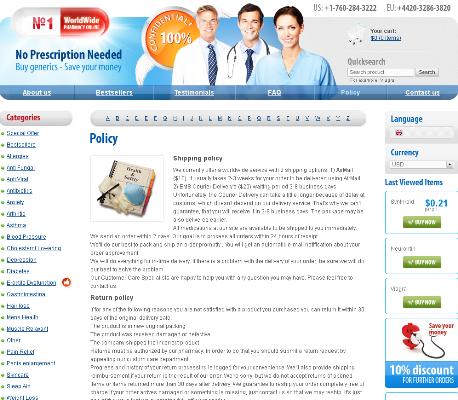Introduction to Rifadin and Its Role in Treatment
Rifadin, also known as rifampin, is a cornerstone in the battle against tuberculosis (TB). This potent antibiotic is integral in treating TB because it specifically targets the bacteria causing the disease. But how does it manage to do so, and why is its role so crucial?
Tuberculosis is a contagious infection primarily affecting the lungs. Symptoms like chronic cough, weight loss, and fever may not seem severe initially, but the disease can be deadly if left untreated. Rifadin's ability to inhibit the production of bacterial RNA polymerase makes it an indispensable agent in the treatment regimen. Understanding its significance, it becomes clear why it is so highly recommended by health professionals.
| Aspect | Description |
|---|---|
| Drug Name | Rifadin (Rifampin) |
| Function | Antibiotic used to treat TB |
| Mechanism | Inhibits bacterial RNA polymerase |
| Importance | Critical part of TB treatment regimen |
Understanding Tuberculosis: Causes and Symptoms

Tuberculosis, often abbreviated as TB, is a contagious infection primarily targeting the lungs, although it can affect other organs. It is caused by the bacterium Mycobacterium tuberculosis. Individuals infected with TB may experience a persistent cough, night sweats, weight loss, and fever. Once the bacteria invade the body, it triggers an immune response, leading to the formation of tubercles in the lungs. These symptoms can often be mistaken for other ailments, making early diagnosis challenging but crucial.
Transmission of TB occurs through airborne particles when an infected person coughs or sneezes. It's particularly problematic in crowded and poorly ventilated environments where the bacterium can easily spread. Rifadin plays a crucial role here, as it significantly curtails the spread and progression of the disease. The World Health Organization identifies TB as one of the top 10 causes of death worldwide, with millions of new cases annually.
The symptoms of TB can range from mild to severe. Some individuals may develop latent TB, meaning they carry the bacteria but do not exhibit symptoms and are not contagious. However, when the immune system is weakened, latent TB can progress to active TB, which is both symptomatic and infectious. Effective management and early treatment with Rifadin can prevent this transition.
Because TB predominantly affects the lungs, it is imperative to monitor respiratory health. Persistent coughing lasting more than three weeks, chest pain, and coughing up blood are serious signs that necessitate immediate medical attention. Untreated, TB can lead to severe complications, including lasting lung damage. Rifadin is one of the primary medications recommended to achieve successful treatment outcomes, significantly improving patients’ quality of life.
The Mechanism of Action: How Rifadin Works
Rifadin operates by targeting the bacteria responsible for tuberculosis, Mycobacterium tuberculosis. It achieves this by inhibiting the RNA polymerase enzyme, crucial for bacterial RNA synthesis. Without RNA synthesis, the bacteria cannot produce proteins essential for their survival, leading them to die off. This mechanism makes Rifadin particularly effective, especially when combined with other antibiotics in a multi-drug therapy approach.
Teh drug's potency lies in its ability to penetrate cellular barriers, allowing it to target bacteria hiding in difficult-to-reach areas such as within macrophages or lung tissues. Through this multi-faceted approach, Rifadin successfully reduces the bacteria load, promoting recovery and minimizing the risk of resistance.
Rifadin's Effectiveness and Success Rates

Clinical trials have shown that Rifadin is highly effective in combating tuberculosis. It works by inhibiting the RNA polymerase enzyme in mycobacteria, blocking their ability to synthesize essential proteins—an essential component in arresting bacterial growth. Patients treated with Rifadin commonly experience significant improvements within just a few weeks, though it is crucial to note that the medication must be taken consistently for the complete prescribed duration to fully acomplish eradication of the infection.
Statistically speaking, Rifadin has a high success rate. Studies indicate that when used in combination therapy, it contributes to a cure rate exceeding 95% in drug-susceptible tuberculosis cases. However, it is essential to monitor its use carefully, as improper adherence to the regimen can lead to drug resistance.
Potential Side Effects and How to Manage Them
Certainly, here's the requested text:
Rifadin can be highly effective in treating tuberculosis, but it does come with some side effects. Patients might experience nausea, vomiting, or a loss of appetite. To mitigate these, doctors often advise taking the medication on an empty stomach or with a light snack. Skin rashes and itching are also common, and it's crucial to monitor these symptoms closely. If they persist, a healthcare provider should definitively be consulted.
Notably, liver issues have also been reported in rare cases, making regular liver function tests indispensable. Understanding these potential complications aids in better managment of the medication regimen. Clear communication with your healthcare provider is essential.
| Side Effect | Management |
|---|---|
| Nausea | Take medication with a light snack |
| Skin rash | Consult healthcare provider if persistent |
| Liver issues | Regular liver function tests |
Future Directions and Research in Tuberculosis Treatment
The landscape of tuberculosis treatment is ever-evolving, with promising advancements on the horizon. New research is focusing on shorter, more effective drug regimens to reduce treatment durations. Scientists are also exploring innovative vaccine developments to provide lasting immunity against TB. Cutting-edge technologies like CRISPR are being investigated to target and eliminate Mycobacterium tuberculosis more precisely. As global health organizations continue to invest in TB research, collaboration across sectors will be crucial to ensure that the progress made can be efficiently translated into real-world solutions.
Additionally, there is a significant push towards personalized medicine, tailoring treatments to individual genetic profiles to enhance efficacy. This approach could potentially shorten recovery times and reduce side effects. Digital health tools are also gaining traction, offering better patient monitoring and adherence tracking. Teh role of artificial intelligence in predicting outbreaks and optimizing resource allocation is an exciting area of research. These advancements underscore the dynamic nature of TB treatment and the continuous efforts to combat this persistent public health challenge.



